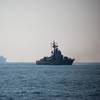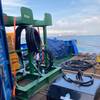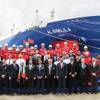Napa Releases New Software Version
One of the main areas of focus has been the development of new tools for probabilistic damage stability calculations. This development work will be relevant to the new SOLAS 2009 regulations coming into effect early next year.
The new release has the capability to check compliance with SOLAS 2009 regarding damage stability. In damage generation, for instance, can now handle the complexity caused by A-class bulkheads. Furthermore, the horizontal escape routes can be now modeled and are taken into account in the calculations.
In addition, much development work has been done to make it easier to use these features; to this end, a new user interface has been introduced, in the form of a NAPA Manager. The revised PROB Manager application provides an intuitive workflow that guides the user through the process of making the calculations.
As to ship hydrodynamics, the highlight of the new release is the Tahara RaNS solver. The RaNS CFD solver is based on the Flowpack code of Professor Yusuke Tahara (). The integration of CFD code into a ship design system such as makes CFD analysis accessible to a larger group of naval architects.
Development of offshore specific functionality has continued as well. Release 2008.1 includes a set of tools for checking the stability of various offshore structures. The 3D model can also be used for other purposes in the offshore design.
NAPA Steel also introduces many new features in version 2008.1. The most significant improvements are related to FEM. The new version includes an automatic meshing algorithm which provides much better quality of the mesh and is also much faster than its predecessor. Another highlight is the new set of interactive tools for modeling the stiffeners on the curved parts of the hull surface.
A third innovation in NAPA Steel is the new drawing functions that further streamline the process of producing drawings automatically from the 3D model. has also taken the first step towards updating the document production features. This takes advantage of what the latest technologies have provided for reporting. A new functionality set produces XML formatted output, which combines all the document components, tables, graphics and text.
Further, the XML can then be processed, e.g. into PDF documents. The XML follows the specification of DocBook, which is a commonly used semantic mark-up language for technical documentation.










